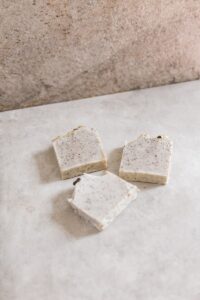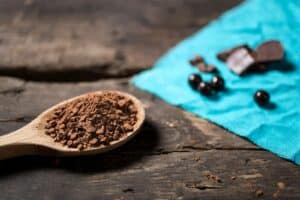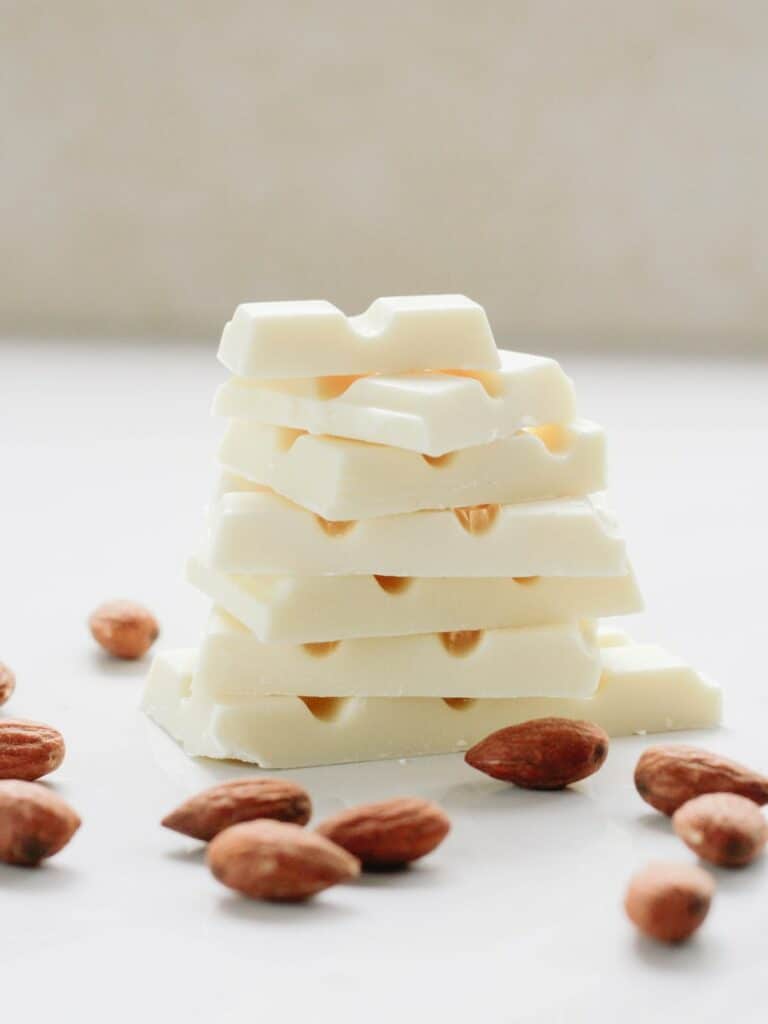As delicious as it is, chocolate is also a complex and delicate substance that can react in surprising ways under certain conditions. One of the phenomena that often puzzle chocolate lovers is the question of why chocolate turns white.
The white film or patches that sometimes form on a chocolate bar’s surface may be unsightly, but they do not affect the taste of the chocolate. This process, referred to as “bloom,” is essentially harmless, and it’s essential to understand it to properly store and enjoy your chocolate. So, why does chocolate turn white?

Why Chocolate Turns White?
There are two main reasons: fat bloom and sugar bloom.
Fat Bloom
The fats that make chocolate so rich and satisfying are also the culprits behind one type of bloom. Fat bloom occurs when the cocoa butter in chocolate separates from the other ingredients and rises to the chocolate’s surface. Cocoa butter is a natural fat present in cocoa beans and contributes to making various forms of chocolate, including milk chocolate, dark chocolate, and even white chocolate.
Chocolate stored in warm or fluctuating temperatures is more prone to fat bloom as the temperatures cause the cocoa butter to melt and separate. When the chocolate cools down, the cocoa butter can crystallize at the surface, leaving a whitish film. Fortunately, the fat bloom does not pose any health risks or spoil the chocolate, and it is still safe to eat bloomed chocolate. The fat bloom appears as a more evident and uneven white layer, rather than sugar bloom which is more powdery in appearance.
Chocolate companies, particularly large ones like Santa Barbara Chocolate, often use bloom inhibitors during chocolate production to minimize bloom. Bloom inhibitors can include vegetable fats, which have a higher melting point than cocoa butter, reducing the chance that the chocolate turns white.
Sugar Bloom
The second reason why chocolate turns white is due to sugar bloom. Sugar bloom occurs when the sugar in the chocolate absorbs moisture, either from the air or from contact with a wet surface. In a process similar to fat bloom, sugar crystals in the chocolate are dissolved by the moisture, carried to the surface, and left there when the water evaporates. These sugar crystals then form a dusty, white layer on the chocolate’s surface.
Sugar bloom is more likely when chocolate is stored in humid conditions or when cold chocolate is exposed to warm air, causing condensation. Similar to fat bloom, sugar bloom is not harmful, but it may affect the chocolate’s texture, making it grainy or gritty.
The Role of the Cocoa Bean
To fully appreciate why chocolate turns white, it is essential to understand the chocolate-making process and the role of the cocoa bean. Cocoa beans are the primary ingredient in chocolate, harvested from the fruit of the cocoa tree. These beans are fermented, dried, and roasted to create cocoa nibs, which are ground up to form a thick paste called chocolate liquor.
Chocolate liquor is rich in cocoa butter and cocoa solids, the two main components of chocolate. Depending on the proportions used and the addition of other ingredients like sugar and milk, the final chocolate product will have different properties. Dark chocolate, for example, contains higher amounts of cocoa solids and has a more robust, complex flavor compared to milk chocolate.
Cocoa Powder and Cocoa Fiber

Cocoa powder is another chocolate product made from the cocoa bean, which is created by pressing the cocoa solids out of the chocolate liquor, leaving behind a cake. This cake is ground into a fine powder, which can be used to flavor baked goods, make hot cocoa, and other recipes.
Cocoa fiber is an essential part of the cocoa bean’s shell, and it has various uses ranging from adding texture to certain chocolates to acting as an ingredient in other food products. However, cocoa fiber doesn’t play a role in chocolate bloom; it is the cocoa butter and sugar that are responsible for the white film on chocolate bars.
Storing Chocolate Properly
Although eating chocolate that has turned white is harmless, maintaining the quality of your chocolate involves taking a few precautions for proper storage. Storing chocolate in a cool, dry place (ideally between 60-70°F) with low humidity will help minimize the risk of both fat and sugar bloom. Keep the chocolate in airtight containers, and if you need to store chocolate for an extended period, consider placing it in the refrigerator in a sealed bag to prevent condensation from forming when you remove it.
When storing chocolate, avoid temperature fluctuations and remember that chocolate acts as an odor sponge – it absorbs smells from its surroundings, which can impact its flavor. Storing your chocolate properly will ensure that it not only looks great but also tastes great.
The Natural Reaction of Chocolate
In conclusion, understanding why chocolate turns white boils down to two main factors: fat bloom and sugar bloom. These naturally occurring processes can change the texture and appearance of chocolate but do not pose any risks to chocolate lovers. Keeping your chocolate stored in a cool, dry place away from humidity and temperature fluctuations will minimize the chance that your chocolate will turn white, and even if it does, the taste will not be affected – so go ahead and indulge in that scrumptious chocolate bar.
